Wildflowers, Grasses and Other Nonwoody Plants
Media
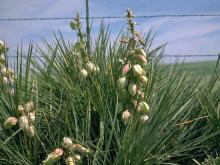
Species Types
Scientific Name
Yucca smalliana, Y. glauca, and Y. arkansana
Description
Three species of yucca grow wild in Missouri. Spanish bayonet was introduced from the Southwest and has escaped from cultivation, but our two soapweeds are native.
Media

Species Types
Scientific Name
Helenium amarum
Description
Our weediest sneezeweed, bitterweed arrived in Missouri in the late 1800s from its home range in Texas and Louisiana. Like our other heleniums, it has domed disks and yellow, fan-shaped, notched ray florets. Unlike them, the leaves are narrowly linear.
Media

Species Types
Scientific Name
Symphyotrichum pilosum (formerly Aster pilosus)
Description
White heath aster is one of Missouri's most widespread and weedy native asters. It grows in uplands, bottomlands, and nearly all habitats in between. It has a shrubby, wide-branching habit, and the stem leaves are thin and needlelike.
Media
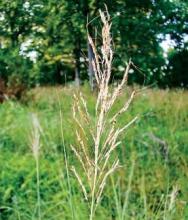
Species Types
Scientific Name
Bothriochloa bladhii
Description
Causasian bluestem and the closely related yellow bluestem are both aggressive, weedy degraders of pasturelands that escape cultivation and endanger native habitats. Learn more about these Old World grasses, and please don’t plant them!
Media

Species Types
Scientific Name
Sorghum halepense
Description
Johnson grass is a native of the Mediterranean that is invasive in our country. It’s a weed that infests cropland and degrades native ecosystems, and heavy infestations are found in all the major river bottoms of Missouri.
Media
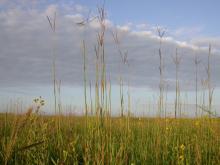
Species Types
Scientific Name
Andropogon gerardii
Description
Every Missourian should know big bluestem. It is the most famous of our native prairie grasses. The seed head of this tall grass branches into three parts, resembling a turkey’s foot.
Media

Species Types
Scientific Name
All true grasses (species in the grass family)
Description
Missouri has 276 species in the grass family, including well-known crop plants and our native prairie grasses. Distinguishing between the species can be difficult, but it’s easy to learn some basics about the group.
Media
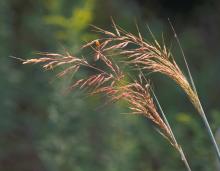
Species Types
Scientific Name
Sorghastrum nutans
Description
Indian grass is a native perennial bunch grass with flowering stalks up to 7 feet tall. The golden seed heads are plumelike, with twisted awns. It occurs nearly statewide and is an important component of native prairies and glades.
Media
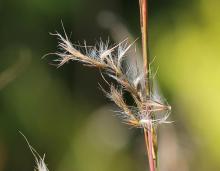
Species Types
Scientific Name
Schizachyrium scoparium
Description
Little bluestem is a native perennial bunch grass with flowering stalks 1–4 feet tall. In fall, the leaves turn coppery. It occurs statewide and is an important component of native prairies and glades.
Media
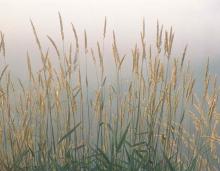
Species Types
Scientific Name
Phalaris arundinacea
Description
Reed canary grass is native to Europe, Asia, and North America, and it varies quite a bit. Our native Missouri version, for instance, is quite different from the Eurasian type that has been widely introduced — and which has proven to be highly invasive.
See Also
About Wildflowers, Grasses and Other Nonwoody Plants in Missouri
A very simple way of thinking about the green world is to divide the vascular plants into two groups: woody and nonwoody (or herbaceous). But this is an artificial division; many plant families include some species that are woody and some that are not. The diversity of nonwoody vascular plants is staggering! Think of all the ferns, grasses, sedges, lilies, peas, sunflowers, nightshades, milkweeds, mustards, mints, and mallows — weeds and wildflowers — and many more!





















